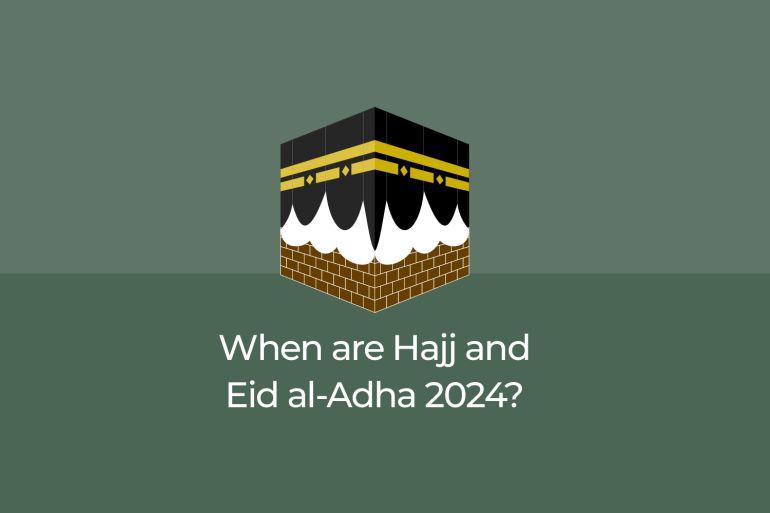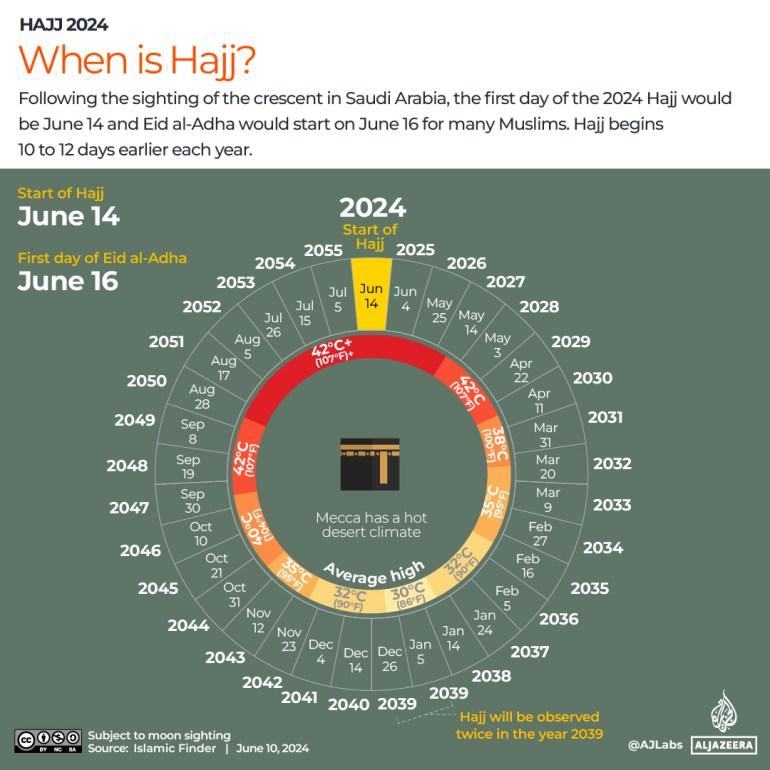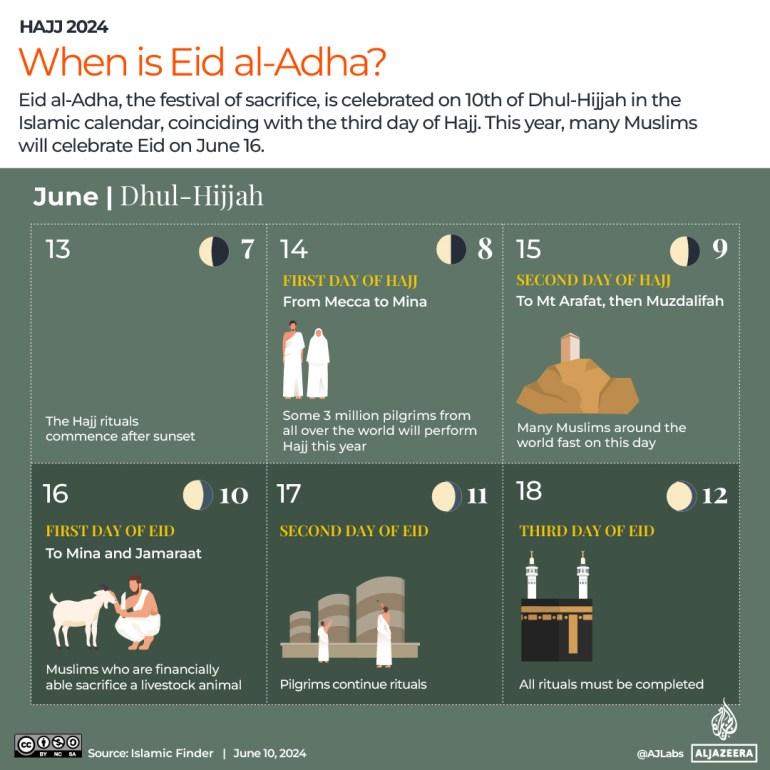Source: ALJAZEERA
ALJAZEERA MEDIA NETWORK

Al Jazeera explores the annual grand religious gathering in Mecca.
Hajj, the largest annual Muslim gathering, takes place in Mecca from the eighth to the 10th of Dhul-Hijjah, the twelfth month of the Islamic calendar.
This year, based on moon sighting, Hajj will commence on June 14, with Eid al-Adha being observed on June 16.
Hajj is a once-in-a-lifetime duty for all physically and financially capable Muslims, meant to purify them of sin and bring them closer to God.
Every year, the dates for Hajj move 10 to 12 days earlier. The infographic below outlines the expected dates for Hajj over the next 31 years.

 INTERACTIVE_WHEN_IS_HAJJ
INTERACTIVE_WHEN_IS_HAJJ
Eid al-Adha, the festival of sacrifice, is celebrated on the 10th of Dhul-Hijjah, coinciding with the third day of Hajj, and lasts for three days. This year, it falls on June 16.
Eid al-Adha is the second major Muslim festival after Eid al-Fitr, which marks the end of Ramadan, the month of fasting.
On the first day of Eid al-Adha, Muslims who can afford to sacrifice an animal and distribute a portion of its meat to those less fortunate. This act commemorates Prophet Ibrahim’s willingness to sacrifice his son Ismail upon God’s command.

 INTERACTIVE_WHEN_IS_EID_ALAZHA_AND_HAJJ_June7_2024_REVISED
INTERACTIVE_WHEN_IS_EID_ALAZHA_AND_HAJJ_June7_2024_REVISED
Muslim pilgrims from around the globe arrive in Mecca in a purified state of ihram and set their intention to perform Hajj.
The state of ihram symbolizes humility and spiritual focus, unifying pilgrims of various backgrounds.
For men, ihram consists of seamless white cloth, with one piece wrapped around the waist and another draped over the left shoulder, leaving the right shoulder bare.
Women wear plain clothing of their choice while adhering to hijab guidelines without covering their faces.
The Hajj retraces the Prophet Muhammad's 632 AD farewell pilgrimage, following the steps of prophets Abraham and Ismail through the desert.
The infographic below gives a brief overview of the Hajj process.

In 2023, around 1.85 million Muslims performed the annual pilgrimage. Of these, nearly 90 percent (1.66 million) were from abroad, with 184,000 residing in Saudi Arabia.
Asian countries provided 1.05 million pilgrims (57 percent of the total), followed by Arab countries (346,000) and African countries (222,000).
There were 969,694 male pilgrims (52.6 percent) compared to 875,351 female pilgrims (47.4 percent).

For millions who cannot attend this year’s pilgrimage, a digital experience offers a glimpse of worship at Islam's holiest site. Al Jazeera provides a 360-degree VR experience, showcasing the major landmarks that millions of Muslims visit during Hajj.
By moving your phone around or dragging the video, you can explore Mecca from various angles.
Your email address will not be published. Required fields are marked *